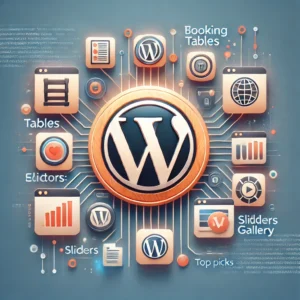Q. I’m building a site for my realtor nephew. It looks great, but he can’t see it (or any of my other web designs) while using AOL. He types in the URL but the AOL browser apparently re-directs him to a totally different URL that is not connected in any way. I hear that there are problems with web surfing on AOL. As a builder, is there anything different or extra I should put in my HTML to make it AOL accessible? — Dave Koss
A. AOL has setup a special site with specific information about designing for AOL. It can be found at http://webmaster.info.aol.com.
Q. I am redesigning my website using MS Front Page and have a very basic question. The program gives me a choice of over 200 different fonts and I plan to use the Benguait Frisky ATT font on some of the pages. My questions are: Can all of the fonts be viewed by all browsers? Does the font need to be present on the web page viewer’s computer in order for them to see the page as I do? I know that most computers have Arial, Times New Roman, Courier, etc. Am I limited to only those fonts? — Dick Chapman
A. No, you aren’t limited to these fonts only. Browsers will try to display your page with the selected font, and if it’s not available on their system, the page will be displayed using the default font (Times New Roman). As a designer you can select more than one font for each item. The Browser will simply go down the list, searching for the font on the visitors system. If it can’t find it, it will try to use the next font on the list etc. In Frontpage press ALT+Enter and instead of selecting the font from the list, enter it’s name and then add a comma plus the name(s) of the font(s) next in line. For example: “Benguait Frisky ATT, Verdana, Arial” will cause the browser to first look for Benguait Frisky ATT, if it’s not found, then it will try Verdana, then Arial or else it will chose Times New Roman.
Q. Is there a workable javascript only shopping cart available and can it be encrypted for security? The cost for secure servers and perl scripted carts is beyond the reach of most small businesses. I have found two semi capable javascript carts but have been unable to debug them as of yet. Please help. — Teddy Hartman
A. No, JavaScript is srictly client-side. If the program requires server side functionality (ie. shopping cart) you’ll have to look to PERL or another language for maximum security and functionality. Also keep in mind that 10%+ of Internet surfers have JavaScript disabled. There are dozens of FREE Perl carts out there, and even the best ones like QUIKSTORE cost a mere $175. Look into the following FREE PERL shopping carts: Webstore, Minivend, S-Mart
Q. Where can you get good quality photos (mostly) and clipart for free? Or atleast somewhere, where the prices are not to expensive. — Ben
A. Try MEGOPhotos for free photos. One of my favourite resources for Clip Art is FreeGraphics.com.
Q. I’m an aspiring webmaster and I’m having a difficult time finding information on the best layout to use so my pages appear consistently on the many different platforms, browsers, monitors, resolutions, etc. –Romy Blystone
A. Here are some tips to keep your site as consistent as possible across as many different platforms/browsers as possible:
1.) If you are using fixed width tables, meaning you’re specifying specific pixel widths for your tables instead of percentages keep the total width of all the pages on your site to 600 pixels, this ensures that visitors cruising the next using a monitor set to 640 x 480 pixels can view your website without horizontal scrolling.
2.) Stick the the 216 color ‘web safe’ palette for graphics. Read the What is the Browser Safe Color Palette? article for more information.
3.) Test and retest your site in NS 3, NS 4, IE3 and IE4 or 5. View your site on several different monitors if possible, and use Browsersizer to test your site at different resolutions.
Q. Dear Dr.,
I am currently developing a web site for my client. I have met a challenge that was raised by the client. They want the homepage of their web site able to automatically set the Default URL of the web users’s browsers to the URL to the web site. Is there a way to accomplish that? or it can only set manually? –Rene Lo
A. It’s possible to have the Default page set automatically for visitors using IE5 by having them click on a link. The code is provided in the article Innovative Marketing Ideas. You’ll have to provide instructions for visitors using Netscape on your site, there’s no automatic way to do it.
Q. I would like to integrate a searchable database into my site. How do I do this? I understand this not to be simple but any push in the right direction would help. –Richard McCombe
A. It really depends on how much you want to pay, how much power you need, and how user friendly you want it to be. You could do it with a couple of CGI Scripts written in PERL, but the best solution would be to use MySQL with persistant CGI on a dedicated server. You could also use Cold Fusion or ASP (Active Server Pages) both which require you to host on an NT server with the right server extensions installed. A host like Virtualscape is what you’ll need if you decide to go with Cold Fusion or ASP.
Q. I’ve seen many sites that have tabs at the top (like folders) that are links to other pages (ie mothernature.com). I would like to create this for my own website but cannot find anything to teach me how to do it. Are there any programs that can do it for me? — Tammy Gold
A. Those tabs are merely graphics that link to other pages. Take a look at the source code of the pages that have them (View -> Page Source in Netscape 4, View -> Source in IE 4).Any text editor will help let you do it, all you need is a basic knowledge of HTML which every webmaster should have before embarking on a website design project.
Q. I run a baseball website (www.astrosconnection.com and see these incredible clear, shiny, perfect looking graphics…I don’t see graphics of this quality often but would kill to learn how to make them…how can someone possibly make graphics that clear? — Chris Bowyer
A. The quality of the graphics depends greatly on your artistic ability, the compression on the images and the program used to create them. Go to the Downloads section of this site and take a look at the shareware graphics programs available, and read the reviews of Fireworks and Adobe ImageReady. If you’re artistically challenged like me then download a copy of Xara Websyle and you’ll be making eye-popping graphics in no time.
Q. I have been creating mconet.com with new Shockwave Flash technologies. I was wondering if you had an opinion or answer to this question. Should I spend time creating my site in a new multimedia language for my site and have some viewers not be able to see it but have a second old version for people that can’t see it? Or, should I just have the html/old version? — Jason VandeBoom
A. The answer to that question depends on how much time you are willing to spend on your site, and how frequently the site is updated. If you are going to be updating the site every day, maintaining two copies could become a very time consuming process. On the other hand, if you update the site once a week and just change one or two pages, then maintaining two copies is entirely feasible.
You also have to take your target audience into consideration. If you know for a fact that 90% of your audience has the plugin installed then it’s relatively safe to maintain a shockwave flash only site. However if you don’t, then you either have to maintain two copies of the site, or just a standard HTML version.
Q. Dear Dr.:
I’ve been designing for only a few months, and don’t know how to place Links to the left or right hand side of a web page perhaps with a colored bar running the length of the page. I’m sure this is a dumb question, but after all this time I can’t find a really good resource to teach me how this is done. HELP! — Wishes to remain anonymous
A. The navigation bars that you are referring to are created using Tables, which every webmaster should know inside out in order to create attractive, usable sites. You’ll find Table Tutorials on www.htmlgoodies.com and I also recommend that you buy yourself a copy of HTML for Dummies or another HTML for beginners book. You’ll be amazed at what’s possible with the with the right know-how.
Q. How do you ensure consistency between browsers? I’m not speaking just of older versions vs. new versions of browsers. My web site works perfectly in Netscape, Internet Explorer and AOL on the PC. It also works great in Netscape and Internet Explorer on the Mac. However, on the Mac, the AOL browser shifts all centered tables with info and/or graphics up against the left margin. Is there a workaround for this? — K. Schoonenberg
A. The only way to make sure your site can be viewed properly in all browsers is to test and re-test. My recommendation is that you look through the information available at http://www.browsercaps.com/ and http://www.anybrowser.org/campaign/ for specific information about different browsers.
Dr Design answers design and development questions for SitePoint readers. Drop him a line today!



































































































